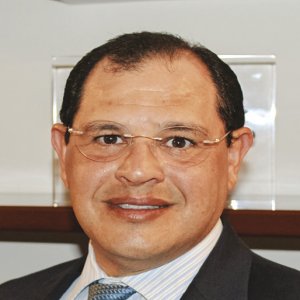Expanding Guerrero's Mining Footprint

STORY INLINE POST
Q: How do you assess the regulatory and social environment for foreign mining companies working in Mexico?
A: For the most part, regulations in Mexico are clearly established and if a company adheres to all the requirements there should be no issues. For a mining operation, an efficient rule of law is essential because otherwise the asset simply becomes too risky, so we truly value the cooperation we enjoy with the Guerrero State Government and from the governor.
The social side of operating in Mexico is more complex. We are working in Guerrero, which does not have a history of industrial activity, so we have to educate the local workforce about the benefits of the industry and how it works. Mining is entirely different to sustenance farming, which has traditionally dominated the area, and this lack of industrial experience can be challenging. The local communities are open to mining and see the long-term advantages of the activity but there is a lack of expertise. For example, we recently suffered a blockade because certain members of the community wanted to be employed, but we cannot employ all 7,000 people in the local area. Given that we have made a US$1 billion investment into the state, this is disappointing but it is a reality that we are dealing with.
Q: What were the highlights during the first year of commercial production at El Limon-Guajes?
A: There is an endless series of bottlenecks that need to be negotiated when moving a project from the development phase into construction and production. We first needed to ensure that the grinding circuit was functioning efficiently, then we needed to test the leach circuit and figure out how to deal with the large quantity of copper in the deposit. We are now working on the final major obstacle, the tailings filtration circuit. We have installed the biggest tailings filtration circuit in the world at the plant and the system not only enables us to recycle all the water we use but also eliminates the risk of any tailings spilling into the Balsas River. It is a complex mechanism so we have been working through a number of details to ensure that the operation works to its full capacity. We are also constructing a new SART plant, which is due for completion by the end of 2017. This facility will not help throughput directly but it will reduce AISC by around US$100/oz once it is operational.
While we were building El Limon-Guajes, exploration fell down our list of priorities but this is set to change now that the mine is in production. We have had some encouraging high-grade intercepts from recent borehole drilling, including some 300g/t hits. This is 10 times higher than anything we have ever seen before on the property, so it gives us great encouragement. We plan to spend at least US$5 million developing the resource this year.
Q: What are the latest plans for Media Luna and what impact could this asset have on your portfolio?
A: Media Luna has the potential to turn the area into a district that mines for generations. Permit applications for the exploration tunnel are in their final stages and will soon be submitted, so we expect to start drifting during 4Q17. From that point we can start the process of upgrading the current resources and continue plans for engineering and construction. Fortunately, we now have a constant revenue stream from El Limon so we know that financing the project will not be an issue. Eventually we expect Media Luna to produce far more gold ounces than El Limon for a longer period of time.
Q: What do you think Mexico should be doing to attract further investment into the sector?
A: The government needs to find a way to reduce the mining royalty tax or expedite the return of those funds to the communities. Mining is an industry that brings employment and other opportunities to parts of the country where no other industry is present, but the tax is making it difficult for companies to continue doing that. Three years have now passed since the introduction of the reform, which is enough time to make an impact but we have yet to see any results.

















